| Vendee Information Vendee History Accommodation, Photos, Reviews, Maps, |
A Short History of Vouvant
Sud
Vendee.. Haut
Bocage.. Coastal
Region.. Marais
Poitevin.. Marais
Breton.. Bas Bocage.. Plaine.. Marais
Olonne..
In 1000AD Vouvant was only a wooded hill surrounded by water in
the middle of the forest. One day while he was hunting, William V (called The
Great), Duke of Aquitaine, found what is now Vouvant and decided to have a
church and a monastery built there. He asked the monks of Maillezais, who had
just finished building their famous abbey on his instructions to do this. But
they had not got enough money and could only build a temporary chapel.
The church was not finished until the end of the 11th century, and was rebuilt in the 12th century in the then prevailing Norman style of architecture. Thus, the crypt, the three apses and the greatly admired North Portal (double arched) date from the 12th century.
Originally the tower was surmounted by a spire, as is shown in an engraving of 1850, predating the restoration of the church in 1881. An octagonal tower was then built which should also have had a spire but this was not built and the tower was finished with a tiled roof, which remains to this day. This gives the church its own commanding appearance. In the nave, only three bays were restored, so luckily we can still see from the remaining walls what the original was like.
The Lusignan family, Barons of Vouvant, built the castle. Only the keep (the Mélusine tower) and the ramparts still exist. History has adopted from legend the name of Geoffroy "Big-Tooth "a fierce warrior, so greedy for power that thought nothing of attacking abbeys and monasteries to add to his riches. According to legend he was the son of the fairy Mélusine, half woman, half serpent who built the castle including the tower which bears her name in one night with an apron-full of stones and a mouthful of water.
Much later Vouvant had to suffer the horrors of the Wars of Religion. The church was pillaged, set on fire and half destroyed by the Huguenots. At the Postern Gate a battle between the besieged and the attackers left more than 200 Huguenots dead.
As for the castle, no longer habitable it was left to become a ruin, great dark fortresses no longer being in vogue. In the 19the century what remained was razed to the ground in order to make a good site for a fairground.
However, Vouvant still retains its historic character and we strongly advise visitors to linger within these walls, which have known the passage of John Lackland and St-Louis (King Louis IX of France) among many other famous people.
On the Fontenay-le-Comte to La Chataigneraie road just outside of the village is the Viaduct railway bridge built by Gustaf Eiffel.
Return to Vouvant
The church was not finished until the end of the 11th century, and was rebuilt in the 12th century in the then prevailing Norman style of architecture. Thus, the crypt, the three apses and the greatly admired North Portal (double arched) date from the 12th century.
Originally the tower was surmounted by a spire, as is shown in an engraving of 1850, predating the restoration of the church in 1881. An octagonal tower was then built which should also have had a spire but this was not built and the tower was finished with a tiled roof, which remains to this day. This gives the church its own commanding appearance. In the nave, only three bays were restored, so luckily we can still see from the remaining walls what the original was like.
The Lusignan family, Barons of Vouvant, built the castle. Only the keep (the Mélusine tower) and the ramparts still exist. History has adopted from legend the name of Geoffroy "Big-Tooth "a fierce warrior, so greedy for power that thought nothing of attacking abbeys and monasteries to add to his riches. According to legend he was the son of the fairy Mélusine, half woman, half serpent who built the castle including the tower which bears her name in one night with an apron-full of stones and a mouthful of water.
Much later Vouvant had to suffer the horrors of the Wars of Religion. The church was pillaged, set on fire and half destroyed by the Huguenots. At the Postern Gate a battle between the besieged and the attackers left more than 200 Huguenots dead.
As for the castle, no longer habitable it was left to become a ruin, great dark fortresses no longer being in vogue. In the 19the century what remained was razed to the ground in order to make a good site for a fairground.
However, Vouvant still retains its historic character and we strongly advise visitors to linger within these walls, which have known the passage of John Lackland and St-Louis (King Louis IX of France) among many other famous people.
On the Fontenay-le-Comte to La Chataigneraie road just outside of the village is the Viaduct railway bridge built by Gustaf Eiffel.
Return to Vouvant
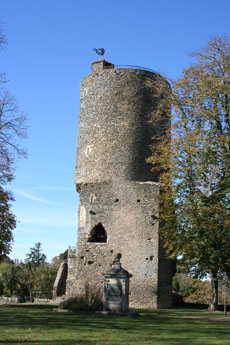
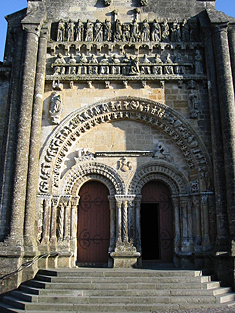
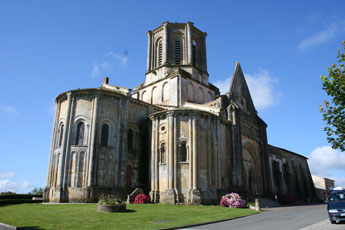
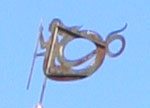
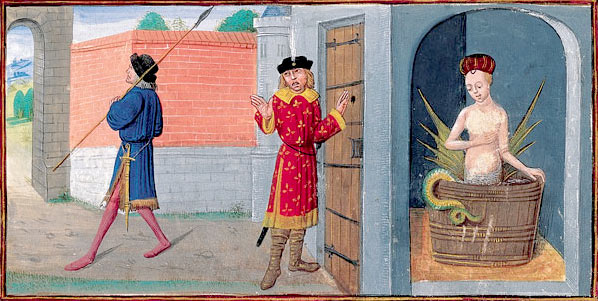
In
accordance with the law "and Freedoms" of January 6, 1978, you have the right to
access and rectify information concerning you. If you wish to exercise this
right, please contact
us.
© Copyright Vendee-Guide.co.uk 2009-11
© Copyright Vendee-Guide.co.uk 2009-11